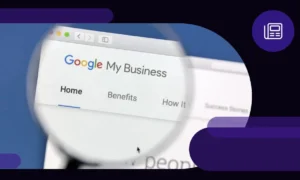Companies are living on borrowed time if they can’t strike a balance between debts and dollars, especially in today’s lightning-fast financial landscape. Developing economies and small island nations are being pushed to the edge by the one-two punch of climate change and economic turbulence, testing their resilience like never before. Forget about flashy short-term gains – handling debt responsibly is the cornerstone of a strong economy that’s built to last.
So you want to ditch debt for good? We’re about to break down the most effective strategies, reliable tactics, and ingenious solutions for creating a debt management plan that’s tailor-made for your financial reality. With debt collection software, the math is simple: less time wasted on tedious tasks means more time focusing on what really matters – growing your business and protecting your financial health. Your organization’s debt doesn’t stand a chance: you’re about to master the art of crafting a custom debt management plan that brings order, stability, and financial peace of mind.
Understanding Debt Sustainability
Debt sustainability forms the cornerstone of sound financial management. A country or organization’s financial stability relies on its ability to pay back debts without sacrificing growth or progress. Finding this sweet spot calls for a clear-headed look at all the moving parts.
Factors Influencing Debt Sustainability
Several elements play a role in determining debt sustainability:
- Economic growth rate
- Interest rates on debt
- Primary budget balance
- Exchange rate fluctuations
- Contingent liabilities
These factors intertwine, creating a complex web that financial managers must navigate. For instance, a country experiencing rapid economic growth may be able to sustain higher debt levels than one with stagnant growth. Similarly, low interest rates can make debt more manageable, while high rates can quickly spiral into unsustainable territory.
Assessing Debt Carrying Capacity
Evaluating an entity’s debt carrying capacity is crucial for maintaining sustainability. This assessment involves analyzing:
- Debt-to-GDP ratio
- Debt service-to-revenue ratio
- Present value of debt-to-exports ratio
Financial institutions like the International Monetary Fund (IMF) use these metrics to gauge a country’s ability to handle its debt load. Unfortunately, there’s no blanket ratio that applies to everyone, every time. Nation by nation, economic factors must be viewed through the prism of local economic realities – otherwise, you’re looking at a distorted picture.
How Comprehensive Software Provides a Structured Solution
Today, debt collection software is revolutionizing the way organizations approach debt management, dramatically streamlining processes and bottom lines. Take the load off with tools that are serious about making your life easier – they’ll help you correct mistakes, amplify your output, and leave you feeling triumphant at the end of the day.
Key Features of Effective Debt Collection Software
Modern debt collection software typically includes:
- Automated payment reminders
- Real-time reporting and analytics
- Integration with existing financial systems
- Customizable workflows
- Compliance management tools
These features work in tandem to create a comprehensive debt management ecosystem. Keep payment schedules humming along with automated reminders that save time and eliminate stress. Then, analyze customer behavior and sales trends with precision using real-time analytics – a goldmine of insights waiting to be uncovered.
Key Components of a Sustainable Debt Management Plan
A robust debt management strategy should include:
- Clear objectives and targets
- Risk assessment and mitigation measures
- Diversification of funding sources
- Regular monitoring and evaluation
- Contingency planning
Each of these components plays a vital role in ensuring the strategy’s success. Spread your financial risk by tapping into multiple funding sources – it’s a smart move that shields you from relying too heavily on any one creditor.
Confronting Debt Challenges: A Path Forward for Developing Economies
Countries struggling to build their economies face a constant threat from debt. It’s a heavy burden that demands careful planning and smart decision-making to avoid being crushed beneath its weight. These nations face a tall order: holding their financial footing on shaky ground. Scarce resources, wildly swinging economic fortunes, and sudden economic jolts can quickly torpedo even the most well-thought-out debt plans.
Common Debt Issues in Developing Countries
Some of the most prevalent debt-related challenges in developing economies include:
- High debt-to-GDP ratios
- Reliance on external borrowing
- Vulnerability to commodity price fluctuations
- Limited domestic revenue mobilization
- Weak institutional capacity for debt management
These issues often intertwine, creating a complex web of challenges. If a nation’s economy is addicted to foreign cash, it’s setting itself up for a painful crash when the next recession hits, as unpredictable exchange rates can amplify debt woes and buckle under the pressure.
Innovative Approaches to Debt Relief
In response to these challenges, several innovative approaches to debt relief have emerged:
- Debt-for-nature swaps
- Countercyclical loan instruments
- Blended finance solutions
- Green bonds and sustainability-linked bonds
These approaches aim to provide debt relief while simultaneously promoting sustainable development. Consider this: a country weighed down by debt can refocus its resources on conservation, tackling both its fiscal and ecological struggles at once.
Navigating the Crushing Debt of Climate Change: A Precarious Path to Financial Stability
Debt sustainability is in grave danger for small island nations and low-income countries, whose fragile financial systems are buckling under the crushing weight of climate change. These nations often face a double whammy: they’re most vulnerable to climate impacts while having the least resources to adapt.
Climate-Related Debt Risks
Some of the key climate-related debt risks include:
- Increased frequency and severity of natural disasters
- Loss of economic productivity due to climate impacts
- Higher costs for climate adaptation and mitigation
- Potential for stranded assets in carbon-intensive industries
- Reduced tourism revenues in climate-vulnerable destinations
These risks can quickly erode a country’s ability to service its debt, potentially leading to a debt crisis. For instance, a single major hurricane can wipe out years of economic progress in a small island nation.
Harnessing Team Tech: Transforming Debt from Crisis to Opportunity
In an era where smart devices reign supreme, keeping debt at bay requires clever tactics, and that’s where technology comes in – a steadfast partner in the battle against debt. Leading the charge in debt collection and management are sophisticated tools that leverage advanced analytics and artificial intelligence to flip the script on traditional practices.
Emerging Technologies in Debt Management
Some of the most promising technologies in the debt management space include:
- Imagine machines that can learn, adapt, and make decisions independently. This is what happens when artificial intelligence meets machine learning – a perfect blend of intelligence and capabilities.
- As a naturally secure system, blockchain simplifies the process of exchanging value online.
- Harnessing the power of big data, we can now crunch numbers like never before to uncover potential risks.
- When growth acceleration is your top priority, cloud computing offers the flexible, on-tap infrastructure you need to stay ahead of the curve.
- Think of all the digital breadcrumbs we leave behind every day – the IoT is the key to collecting and making sense of that data deluge in real-time.
Today’s debt managers face a constant battle to stay on top of their game. But what if you could wrestle complexity to the ground, make light work of decisions, and coast to greater efficiency – without breaking a sweat?
Implementing Technology Solutions
When implementing technology solutions for debt management, consider the following steps:
- Assess your organization’s specific needs and challenges
- Research available solutions and their compatibility with existing systems
- Develop a phased implementation plan
- Provide comprehensive training for staff
- Regularly evaluate and update your technology stack
By thoughtfully implementing technology solutions, organizations can significantly enhance their debt management capabilities. Case in point. Picture this: streamlining your tasks, saving time, and boosting productivity – all thanks to the incredible C&R Software. Take your debt collection to the next level with software that rethinks the way you manage outstanding accounts.
Building Institutional Capacity for Debt Management
Strong institutional capacity is fundamental to effective debt management. Without it, even the most sophisticated strategies and technologies may fall short of their potential.
Key Areas for Capacity Building
To build robust institutional capacity for debt management, focus on:
- Developing technical skills in debt analysis and risk management
- Enhancing legal and regulatory knowledge
- Improving data management and reporting capabilities
- Strengthening governance and accountability mechanisms
- Fostering a culture of continuous learning and improvement
Each of these areas contributes to a more comprehensive and effective debt management framework. Picture this: timely and accurate debt reports, thanks to a data management system that’s got your back.
Strategies for Enhancing Institutional Capacity
Consider these strategies to boost your organization’s debt management capacity:
- Consider this your personal growth blueprint: commit to regular training and professional development to stay sharp and relevant.
- Partner with global groups to exchange valuable insights and expertise.
- Pair those who’ve been around the block with those just starting out to create a community of learning, encouragement, and growth within your organization.
- Pinpoint areas where you’re falling short by regularly sizing up your skills.
- Capacity building just got a lot easier – thanks to the incredible power of technology.
Debt management success starts with a strong organizational foundation, and that’s exactly what systematic investments can provide.
Conclusion
Keep debt in check by bringing strategy, ingenuity, and dedication to the table – it’s a long-haul effort. Making debt manageable means tackling it from all sides – not just plugging in some new technology, but also staying ahead of the climate-related curveballs that can throw repayment off track.
To ride the debt waves, organizations need to know the drill. Building strong debt management skills, using smart tools, and strengthening internal capacities are the right tools for the job. When debt’s involved, most people focus on avoiding the next crisis – but the real goal should be creating a solid financial base that sparks long-term growth.
Debt management just got a lot easier. Top-notch debt collection software solutions come loaded with advanced features to help you tackle your debt head-on. Imagine being able to identify areas where you can cut costs, optimize your spending, and bring your finances back in line with your goals – that’s what these tools can help you achieve.



































